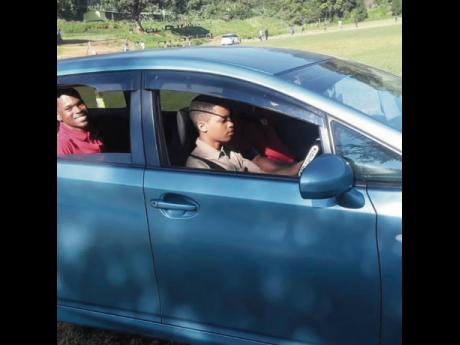Defensive driving is intelligent driving
Defensive driving is intelligent driving. It means driving to save lives, precious time and limited money. It means being alert and fully aware of the road and acting in time and on time. Intelligence, according to the Oxford Dictionary, means “quickness of understanding”, while the Concise English Dictionary places intelligence as “endowed with the faculty of understanding or reason, well informed, the capacity to know”.
The fundamentals of control, like the table of elements in chemistry, are the essence of driving. “Once the basics are learned, the way is clear for safer, more satisfying driving,” says David Jones, auto mechanic. To many persons, a motor vehicle means genuine convenience and enjoyment. To other drivers, it is a cause for great financial outlay, with monthly payments over a five- or 10-year period.
“Intelligent driving means avoiding collisions at all cost,” says Coleen Clarke from the Ministry of Education, Youth and Information. “It means trying and succeeding in keeping space between your vehicle and others on all sides.” According to Clarke, intelligent driving means responding to the other drivers with all appropriate signals required and giving adequate notice of intentions.
The concept of defensive driving means ensuring that the brakes are pumped so that tail lights show that you are slowing or stopping. It means using the horn appropriately to warn other drivers where you are. Applying the defensive driving concept means relying on a driver’s awareness, alertness and good judgement in starting, stopping and turning, additionally, knowing and applying road and traffic rules on a daily basis. A defensive driver reads the road, drives cautiously, and observes for the sudden erratic movement of other frantic, drunk and gazing drivers. He looks and is careful at intersections whether the controlled or the uncontrolled intersections.
It is the vehicle’s performance and how it achieves maximum speed in minimum time, its power and sleek lines that add to the defensive driving equation. Certainly, the basis of a well-maintained car is a well–tuned engine. With an engine that operates at full efficiency and the driver who is trained, certified and follows the road code, the defensive driver is now ready for the road. He avoids accidents while being focused and keeping a clear head as to when to stop, look and listen. Dr Valerie Freckleton, psychologist, offers some pointers which should be followed to help in reversing the high accident rate:
Point 1: Take rest stops at least every two hours, even if you do not feel extra tired.
Point 2: Rest before the start of the assigned task.
Point 3: Try not to get to bed too late, as a driver’s body is accustomed to going to sleep at a routine time.
Point 4: Do not drive for very long hours; it can be dangerous if one is both tired and sleepy.
Point 5: Do not take any drug that can make you drowsy.
Point 6: Look out for pedestrians, cars in front, vehicles behind, parked motor vehicles, bicycles, bikes, intersections, cars approaching and children.
Point 7: Manage your time wisely and carefully.
Point 8: Try to control any feelings of irritation or high emotions.


